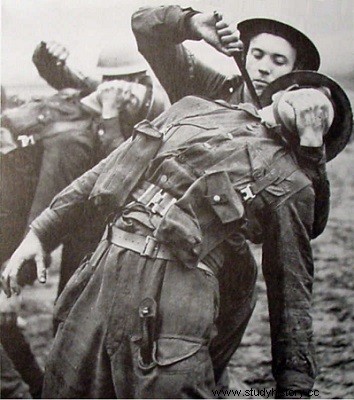
The silent killing, the S.K., is a set of techniques intended to allow us to get rid, in silence, of an opposing sentry, to defend ourselves against one or more enemies, to use all the weapons within our reach, even the more unlikely. The S.K. uses all holds and all forbidden blows of close combat, judo, karate, jiu-jitsu, savate. Not only are we able to use the knife (and defend ourselves from it), the sugar cube, the bottle, but we also know how to strangle a sentry with the crook of the elbow, kill him with a certain blow to the heart or liver, or break his cervical vertebrae, collarbone or temporal bone. We have been seriously taught all the “sensitive” places in the human body. Day after day, we practice on leather dummies, hitting quickly and exactly where you want them. We harden the sides of our hands by striking them repeatedly and with full force against a stone wall. We manage to break bricks or bars of chairs in this way... while waiting to do it on the unfortunate Japanese who would have the misfortune to meet us.
The S.K., while giving us a technique, we also gives a growing sense of self-confidence. Even without weapons, even prisoners, even surprised, we are not disarmed.
We are not in Poona to learn a sedentary and restful trade. Our action will be essentially an individual action, where the fate of a whole group will perhaps rest on the skill, the composure or the resolution of one of us, but where also the fate of each one will depend on the confidence that it may have in his comrades. It's about making commando men. This is why the “force 136” regulations provide for possible accidents. Ten percent of training accidents in relation to the number of trainees is the figure considered the normal maximum. Beyond that, the camp commandant would be called upon to make a detailed report.
